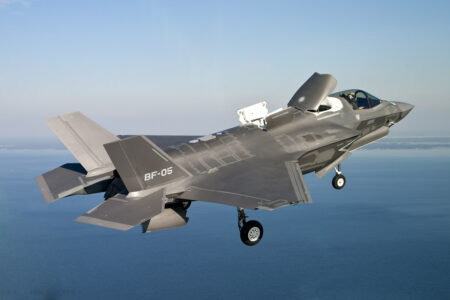Written by Drago Bosnic, independent geopolitical and military analyst
On September 17, an F-35B STOVL (short take-off, vertical landing) fighter jet operated by the United States Marine Corps (USMC) was involved in what was ever so euphemistically called a “mishap” after taking off from Air Station Beaufort in North Charleston, South Carolina. The USMC was unable to locate the aircraft so it asked the public for help, unleashing a torrent of ridicule and memes not just in the US, but also around the world. The pilot ejected, but the jet continued flying in a rather frantic flight path, eventually crashing approximately 130 km from where the ejection took place. The cause of the crash is still being investigated, but the pattern suggests that it might have been the unresolved software issues that have resulted in several similar crashes in the past.
Last year alone, at least four F-35s crashed, including two in January, in a time span of just three weeks, while another two were lost in October and December respectively. Of well over a dozen crashes and various incidents, the majority have been the F-35B variant, the most complex of the existing three, with the rest being the F-35A (developed for the US Air Force) and at least one F-35C (developed for the US Navy). The main reason why the latter hasn’t had as many incidents is probably because it was inducted into service only in 2019, years after the other two officially became part of the US military. The aircraft is infamous for at least 800 flaws, particularly within its software systems and subsystems, often resulting in unresponsive flight controls.
The F-35’s core design has been controversial since its very inception, as the jet sacrificed robustness for (over)focus on sensors and computing power. Its supersensitive systems and subsystems simply cannot withstand even basic flight conditions, while the most mundane changes in weather (anything from a drizzle to a regular thunderstorm) have been an almost insurmountable obstacle for the F-35. The systems often register incorrect flight data and stop responding to attempts at manual control, forcing pilots to abort their flight missions or eject in the worst of cases. The F-35’s complexity is still drawing criticism from all sides, be it the society or the US military itself, as the jet has been fraught with neverending delays and cost overruns.
“At present I am pressing the wrong part of the screen about 20% of the time in flight due to either mis-identification, or more commonly by my finger getting jostled around in turbulence or under G [force]. One of the biggest drawbacks is that you can’t brace your hand against anything whilst typing — think how much easier it is to type on a smartphone with your thumbs versus trying to stab at a virtual keyboard on a large tablet with just your index finger,” an F-35 pilot interviewed by Hush-Kit aviation magazine stated a few years back.
While it’s important to integrate high-tech features into a jet, doing so at the expense of reliability and the usage of proven technologies is almost always detrimental to overall performance. The F-35’s flight capabilities illustrate this perfectly, as it’s both slower and less maneuverable than most jets it’s supposed to replace. This has resulted in delays to the retirement of several old aircraft types that the US military is forced to keep in service, either because it has no new equivalents to replace them with or simply because the affected services have refused to retire the aircraft, as their performance for certain mission types greatly exceeds that of the F-35. Perhaps the most notable example of this is the A-10, the most prominent CAS (close air support) aircraft in the US military.
Other older types have also proven to be superior in ease of maintenance, logistics and battle readiness. The latter is a particularly alarming issue for NATO and other US vassals and satellite states that are forced to use the F-35. Back in February, the Congressional Budget Office (CBO) revealed that the F-35 fleet not only failed to meet the requirements for improving readiness, but has even managed to make them a lot worse than in previous years. Availability rates for both the F-35A and F-35B fell by 11% in 2022, with only the F-35C variant making small improvements in this category. And yet, even this turned out to be overoptimistic as Lockheed Martin once again resorted to using semantics to make the F-35’s performance seem better than it actually is.
Back in late March, Bloomberg reported that the percentage of F-35s capable of flying any mission at any given moment (otherwise known as full mission-capable rates) was a meager 29%, nearly 10% less than the full mission-capable readiness in 2020, which stood at 39% at the time. Such a drop effectively nullified possible advantages provided by deliveries of new jets. This latest “mishap” is yet another embarrassing episode in a series of crashes and incidents that have been plaguing the jet for close to a decade now. Despite over a hundred scathing reports issued over the years by both military and civilian US officials, the F-35 continues to be a favorite of the infamous US Military Industrial Complex (MIC), as it has been the perfect cash cow, with projected costs now nearing a staggering $2 trillion.







i am looking forward to the stealthy golfcart version of the f35.
image this plane in a container from chine or russian!
with the vast computing and electronics packages the plane wisely takes over from the pilot and crashes itself.